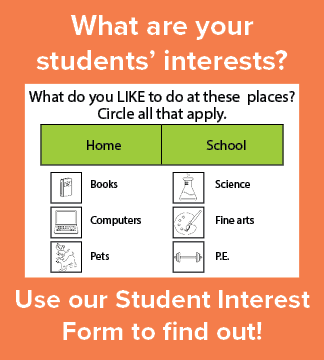July Newsletter | Transition and Community

Talking Transitions for Children with Autism
Transitions of all shapes and sizes can pose significant challenges to people with autism. From everyday routines like getting a haircut or going to the doctor, to big life transitions like changing schools or starting a new job, research has shown that early access to the right information, materials, and strategies can help streamline transitions for students, families, and caregivers. This month’s newsletter and podcast tackle some of these transitions and strategies.
Plan Ahead

For many parents or caregivers, life with a young child may already seem impossibly full. Understandably, families of children who have high-support needs sometimes find themselves waiting to prepare for later transitions to come. However, taking even small steps well in advance can pay dividends when the time comes for these transitions. Starting to outline plans as early as preschool for the upcoming few years can be very beneficial. Note the following suggestions for getting started:
Establish contact with your child's potential school. Many schools have staff who specialize in transitions, and their titles often include words like “transition coordinator” or “transition specialist.” These important contacts can help to establish expected timelines and strategies and can give you more information on special services for which there are often long waitlists.
Learn about IEP meetings. In many cases, an Individual Education Program (IEP) is required for a child to receive special services. An IEP meeting that involves the student typically occurs during adolescence. This prepares students for crucial transitions and can help them to advocate for themselves. To help students get the most out of this meeting, learn some of the key information and strategies in our Understanding My IEP Social Script from our “Participating in an IEP Meeting” Routine Teaching Unit!
Consider whether your child is learning vocational and pre-vocational skills. These may include skills like sorting or cleaning, and they have enormous value in helping students to build independence outside of the classroom and beyond. Resources in our Routine Teaching Unit, “Recycling,” includes holistic activities that practice using a visual schedule, navigating the school, creating recycling schedule templates, and remaining on task during an activity!
Self-Advocacy and Self-Determination
The STAR and Links curricula use built-in, evidence-based strategies for empowering students to advocate for themselves. Our Arrival Guide, for example, helps to teach students to make choices (what to eat for lunch, for instance) and to ask for help when they need it.
It is important when crafting transition plans to consider the student as a complete, multi-faceted person with needs, goals, and preferences. Some questions you can ask to help improve student-led and student-determined initiation in transition activities include:
What are the student’s short-, medium-, and long-term life goals, and what support systems are in place to help them achieve these goals?
To what degree has the student been empowered to initiate interactions with others, particularly in asking for what they want or need?
How close are the communication channels between families, students, and teachers? Are all parties involved in the conversation, and are students included in a meaningful way? Use the student interest form (right) for the student to identify their preferences.
What is the relevance of the routines being taught? A student whose family’s typical routine includes shopping at the grocery store, for instance, might especially benefit from skills involving money, transactions, and food preparation.
Episodes on the Autism Annex, the STAR Podcast, share real-life experiences and discuss how to best prepare for transitions with teachers, parents, and professionals.
Evidenced-Based Practices
Parents and caregivers often ask us, “My child has had success with the STAR curriculum in the past, but now they are moving to a new school. What should I do to make sure things continue to be successful for them?” Continuity is key, and we recommend that families advocate for their child by asking a new school about what evidence-based programs are at work in their classrooms. By explaining what has been successful for their child in the past, parents can open the door to conversations about what a new school can offer their child.


